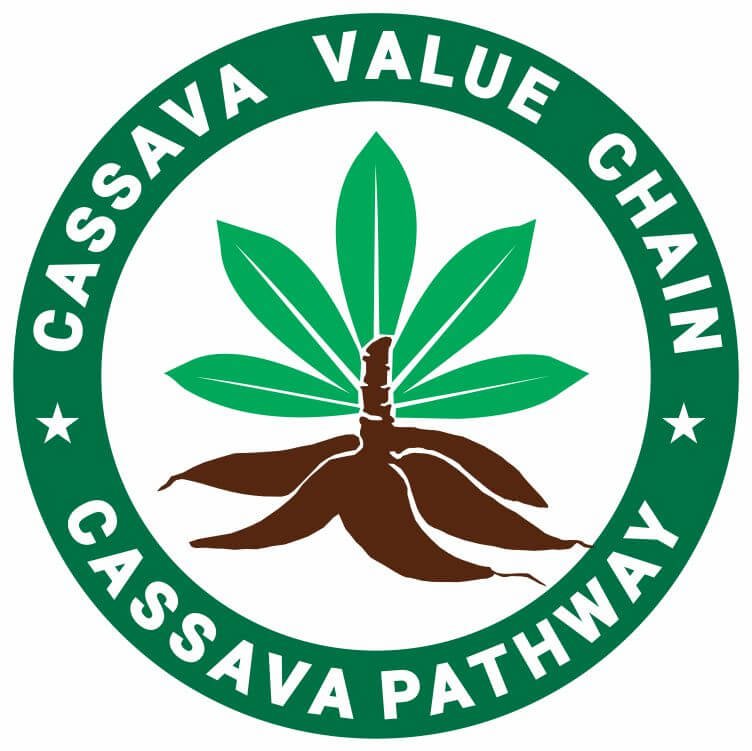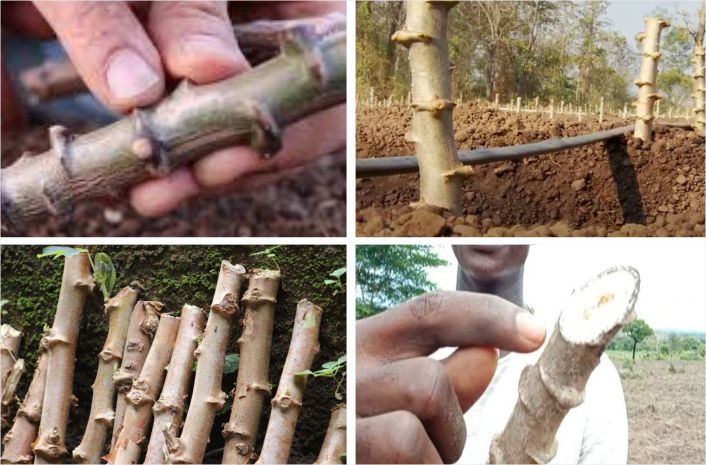When it comes to cassava cultivation, one of the most important aspects is proper stem cutting, and knowing how to cut cassava stems the right way makes a difference.
While many farmers focus on soil quality, pH levels, and water management, the process of cutting cassava stems plays an equally vital role in ensuring healthy growth and high yield.
As a long-term cassava crop farmer, I have planted many types of cassava stems, including those broken with my hands because of the unavailability of cutting tools.
While they germinated and sprouted, they had their shortcomings.
In this guide, I’m going to guide you through the right way to cut cassava stems, step by step, so you can get the most out of your cassava farming efforts.
Related: How to Prepare the Land for Cassava Planting
Table of Contents
- Why Is Knowing How to Cut Cassava Stems Important?
- The Right Time to Cut Cassava Stems
- Step-by-Step Guide: How to Cut Cassava Stems Properly
- Best Practices for Successful Cassava Stem Cutting
- Final Thoughts
Why Is Knowing How to Cut Cassava Stems Important?
Before we discuss proper the how-to, let’s quickly talk about why knowing how to cut cassava stems properly is the real deal.
Cassava is propagated through stem cuttings, which means the quality and technique used in cutting the stems can directly impact the growth and health of the plant. See more on cassava stems and anatomy.
Improper stem cutting can lead to poor germination, slow growth, or even the failure of your cassava crop.
On the other hand, when done correctly, cutting and planting cassava stems gives you a healthy, vigorous crop that will thrive in the soil.
Suggested: How to Preserve Cassava Stems for the Next Farming Seaon
The Right Time to Cut Cassava Stems
Timing is everything when it comes to cutting cassava stems. The best time to cut cassava stems is during the dry season, typically when the plant is between 8 to 12 months old.
This is the point at which the plant’s stems are strong, firm, and fully matured, providing the best cutting material.
Cutting them too early can result in weak stems that may struggle to root properly while waiting too long could mean that the stems become too woody and less suitable for planting.
It’s also important to cut the stems after the plant has stopped producing new growth.
This ensures that the energy from the plant is directed toward the growth of the tubers rather than the stems.
Related: The Standard Spacing for Cassava Planting
Step-by-Step Guide: How to Cut Cassava Stems Properly
1. Choose Healthy, Mature Plants
The first step is selecting the right cassava plants. You’ll want to choose plants that are healthy and strong, as these will provide the best cuttings.
Look for plants that have good overall health, with no signs of disease or pest damage. Healthy plants are more likely to produce strong, disease-resistant stems.
Check the stems for firmness and smoothness. They should not be too old and woody, or too young and soft.
Older stems are usually harder and have less potential for good growth, while younger ones might lack the necessary strength to establish roots in the soil.
Related: Storing Cassava Roots the Right Way
2. Gather the Right Tools
Before you start cutting, make sure you have the right tools at hand. You will need a sharp machete or pruning knife to ensure clean cuts.
A clean cut reduces the risk of disease and makes it easier for the stem to form roots once it’s planted.
In addition to a cutting tool, you may want to have a pair of gloves to protect your hands from injury and to keep your tools clean.
Clean tools help prevent the spread of diseases from one plant to another.
Related: What Crops Can Intercrop with Cassava?
3. Measure and Cut the Stems
Now that you have your tools and the right plants, it’s time to cut. The best length for cassava stem cuttings is usually between 20 and 30 centimeters (about 8 to 12 inches).
This length is long enough to provide a good surface area for rooting but not too long that it’s difficult to handle.
Here’s the key:
Each cutting should have at least one node which is the part of the stem where leaves or branches grow from.
The nodes are where the roots will form, so it’s essential that each cutting has at least one. If you cut too short or don’t include a node, the stem may not root properly, and your efforts could go to waste.
When cutting, ensure that you use a sharp machete or knife to cut straight across the stem. Avoid jagged cuts, as they can make the stem harder to handle and reduce the chances of successful rooting.
You can make the cuts at a slight angle, but that’s optional. The most important thing is that the cut is clean and smooth.
Suggested: Harvesting Cassava the Right Way
4. Remove Excess Leaves
Once you’ve made your stem cuts, it’s time to remove any excess leaves.
While the leaves can be helpful in photosynthesis for the plant’s growth, having too many leaves on your cuttings can lead to unnecessary water loss during planting.
The fewer leaves there are, the better it is for your cassava cuttings, especially during the first few weeks when they’re rooting.
It’s also a good idea to remove any side shoots or small branches from the stem, as they can take energy away from the main stem and interfere with root development.
Only leave the top part of the cutting with one or two leaves. This will help direct energy into root formation.
Recommended: The Environmental Impact of Cassava Farming
5. Allow Cuttings to Dry
After cutting and cleaning the stems, some farmers recommend letting the cuttings dry out for a short period, usually about 1 to 3 days.
This allows the cut ends to heal and reduces the risk of rotting once they are planted in the soil.
This step is optional, but it can be beneficial in reducing bacterial or fungal infections.
Simply leave the cuttings in a cool, shaded area with good air circulation.
Don’t leave them out in direct sunlight, as this can cause them to dry out too much and become brittle.
6. Storage Before Planting
If you’re not able to plant the cassava cuttings immediately after cutting, you can store them.
As described in the last point above, store the cuttings in a cool sheltered area away from direct sunlight to avoid them frying.
If you need to store them for more than a few days, you can place them in a damp cloth or wrap them in a plastic bag to retain moisture. Just ensure the storage environment is cool to prevent sprouting too early.
While storage is fine for a short period, it’s always best to plant the cuttings as soon as possible after cutting to ensure the best chances of successful growth. Read how to plant cassava cuttings.
Related: Different Methods of Planting Cassava
Best Practices for Successful Cassava Stem Cutting
To sum up, here are some additional tips and best practices for cutting and planting cassava stems successfully:
- Use Disease-Free Cuttings: Always use stems from healthy, disease-free plants to prevent the spread of diseases.
- Cut at the Right Time: The best time to cut stems is when the plant is between 8 and 12 months old and the dry season has begun.
- Proper Storage: If you can’t plant immediately, store your cuttings in a cool, shaded place to prevent premature sprouting or drying out.
Related: What is the Best Time to Plant Cassava?
Final Thoughts
Knowing how to cut cassava stems is important for successful farming.
Cut stems during the dry season, ideally when plants are 8-12 months old and have stopped growing new shoots.
Select healthy, disease-free plants, and use sharp tools for clean cuts. Each cutting should be 20-30 cm long with at least one node for rooting.
Remove excess leaves and let cuttings dry for 1-3 days if needed. Store cuttings properly in cool, shaded areas before planting.
References:
- https://www.mdpi.com/2223-7747/13/4/471
- https://www.cardi.org/wp-content/uploads/2021/12/Fact-sheet-08-Growing-Cassava-_-Harvesting-and-Post-harvest-handling_Final.pdf
- https://www.redalyc.org/journal/3030/303067924033/html/

Chimeremeze Emeh is a writer and researcher passionate about Africa’s most transformative root crop—cassava. Through his work at cassavavaluechain.com, he explores the entire cassava industry, from cultivation and processing to its diverse applications in food, health, and industrial use.
He also writes for palmoilpalm.com, where he shares his extensive experience and deep-rooted knowledge of palm oil, covering red palm oil, palm kernel oil, and refined products. His work there reflects his lifelong connection to agriculture and his commitment to promoting sustainable value chains in Africa.
Driven by curiosity and purpose, Chimeremeze aims to shed light on how cassava continues to empower communities, strengthen food systems, and link traditional farming wisdom with modern innovation.

